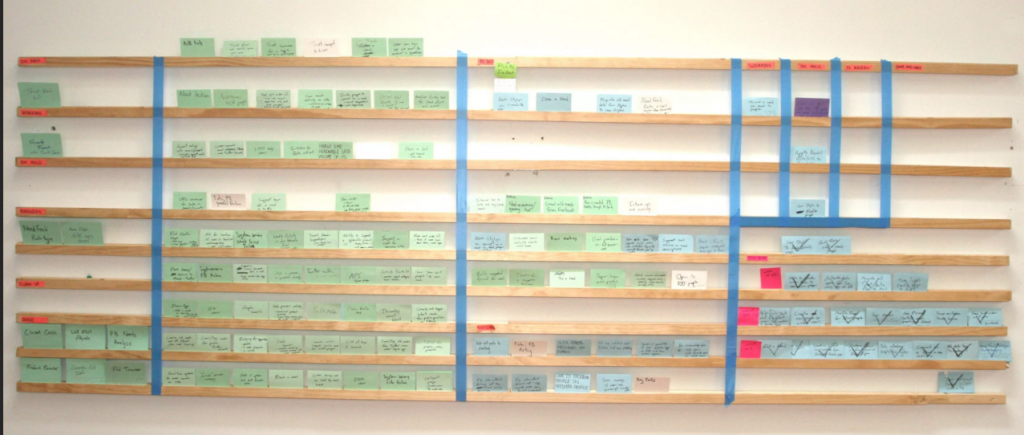Impressions from the inaugural Strata+Hadoop World Singapore 2015
There’s never a second chance to make a first impression, right? Well, the first session at the inaugural O’Reilly Strata+Hadoop World Singapore conference in my hometown left a remarkable impression on me.
In the evening of December 1st, 2015, I jumped out of a cab in the heart of the undeniably smartest city on the planet, whizzed by 3-storey tall 60-meter (200 feet) wide “Big Picture” screen at Suntec Conventions Centre,
– the largest High Definition TV wall in the world – and picked up my EMC Exhibitor Badge. I rushed straight in to the only conference session of that day, the pre-keynote “PechaKucha Night”.
Wait, went straight in to… what?
Well, that was my first impression as well.
#PechaKucha is a supercharged 20 slides x 20 seconds presentation format with speakers back to back! There’s no room for error, no time for demo, only statements and ideas worth sharing, in less than 7 minutes. Illustrative pictures instead of diagrams, single-bullet 48pt font lines, an OVERDOSE OF CAPS LOCK, and of course kittens here and there.
It was the second best way to start the show, with the first probably still being James Brown’s appearance in Apollo New York :and Lucas “Fats” Gonder
When I left Suntec that night I was thinking a lot about what I saw during the PechaKucha kick-off!
Most of the content that grabbed my attention was around intra-enterprise / inter-department enablement, soft-skills of selling the value of Big Data Analytics to stakeholders, and DevOps trends and paradigms of an Agile Enterprise. It intertwined very well with the learnings from the latest O’Reilly book I read on my business trips. In this blog I would like to share with you a personal, broader summary, mixed and stirred with my own experiences, and inspired by the speakers at PechaKucha:
Random Fact #1: these days people take “selfies” even while they are attempting a crime, for example when siphoning a gas tank of a police car (“gamification of crime”) or upload pictures of car accidents to Facebook instead of calling Emergency Services.
- Stop being precise with Big Data. The Dunning-Kruger cognitive bias impacts even the smartest Data Scientists, the paralyses impacts all of us during the early Proof-of-Value meetings when we question ourselves and decide: “we have to go back and do a query to double-check these numbers…”. The paradox is that the business wants your analysis on the spot, preferably in real-time without double-checking. Stand up and say what you know from the analysis of your Big Data at that moment of time, don’t log a task for yourself to get back to it later.
- The most valuable piece of information is a User Story. To succeed with Big Data initiatives, companies need to track what stakeholders, customers and partners want to see from their data, every day. Track them in open source projects, or better yet, in Pivotal Tracker or maybe just as a collection of sticky notes (see image below). The home for all of them has a Scrum/Agile term called “Icebox”, and anyone in the company can submit them there. Then, prioritize and evaluate the only needed, and work on 2…3 most valuable ones at a time in the backlog. Once completed, the User Story is either approved or rejected and moved into “current” status quo of the IT Value Prop.
Source: https://www.quora.com/What-should-a-lean-startup-functional-spec-product-requirements-doc-look-like
Random Fact #2: breathing out three times and mentally closing every unread e-mail on your imaginary laptop boosts probability of a very successful next Face-to-Face meeting or phone call.
- No, logging User Stories is not TOGAF or ITIL. It’s survival.
- User stories are like “Color-code predicted engine RPM on each predicted segment of route” or “Graph top 24h of sentiment bookmarks from all call center agents” or “Automate builds” and not like “Derive a K-Means from XYZ via ABC and deploy on via PQR”. Always keep writing them down as the user requests them. Don’t use technology terms or hypothesis to describe them.
Random fact #3: The “Digital Revolution” already happened, it’s in your pocket right now, that slab of silicon with a touch-screen, that’s it. But we only scratch the surface of realizing its full potential. (Pecha Kucha Presentation by Chris Harrold)
- For every User Story, focus on delivering the Minimum Viable Product (MVP). Stop thinking “ideal stacks”, simplify and get the MVP, the solid architecture can follow later! We already know for sure that no one from your users actually cares how complex the architecture is to get that zoom-in pie-chart. They don’t care how it’s done and if it’s scalable or not. Actually, they may think it’s over-complicated, too expensive, and too late anyway. How many open source projects announced their yet another dot point release in the past 6 months? How many press releases have you read in past 3 months with the phrase “more than a X number of companies with 100%-s growth”? Don’t be distracted, focus on the Minimum Viable Product and complete it.
Random fact #4: We are our software and our interaction with it. We are our facebook/twitter/instagram/snapchat/whatsapp/web history, and digital interaction, this software, tells us more about our users and ourselves than ever before.
- Track your speed. Every day, try to do something small, for incremental progress and get a little closer to the completion of your User Story. Don’t focus on something that you think will have more impact, but will take longer. Put it as a User Story into the Icebox, and get back to working on something more achievable.
- Get DevOps right for your experiments early on. It’s not possible to fail monolithic code or fail micro-services or fail Proof of Values based on your data. Embrace the “the project failed, OK, what’s next?” approach to get to your MVP.
I am really thankful for O’Reilly adopting the format of #PechaKucha. It inspired many new thoughts that I will take back to work and to my customers to inspire them and to implement a Fail Fast and MVP approach for new projects.
And most importantly, I almost forgot! Please reach out to @DellBigData to find out more about our Big Data practices and the scale-out Hadoop compatible file systems layer with up to 89% storage efficiencies, paramount performance and all required enterprise features.
For inquiring minds, — download the Isilon Simulator to your laptop and take a look at EMC’s Hadoop Starter Kit.


